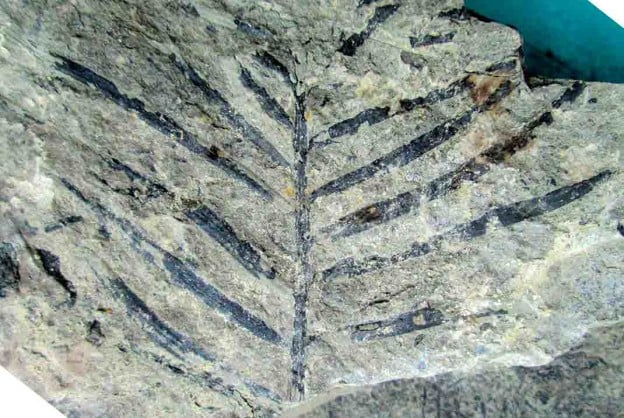Most conifer leaves have just one vein, whether they be the needles of pines, or the much broader leaves of some tropical conifers. This limits their size and shape (they mostly stay small and can’t do fancy stuff like many flowering plant leaves). Just two kinds of conifer have several veins in their leaves – some of the ‘Monkey Puzzles’ or ‘Bunya Pines’ (Araucaria) and the kauris (Agathis). All of these are evergreen.
In the past, things were rather different. My Chinese and Russian colleagues have just put out a paper reviewing Podozamites – a sort of ‘catch-all’ term for fossil multi-veined conifers. We limited out study to what is now East Asia – it has a nice latitudinal spread of plant fossil localities going all the way from the Late Triassic to the Late Cretaceous. Early in this time Podozamites was a very widespread in mid-latitudes, and at times it probably formed an almost mono-specific kind of swamp forest. It also seems to have been deciduous, rather like the Ginkgo, which in some respects, is probably the most similar thing around today.
We documented how, through the Jurassic and Cretaceous periods, Podozamites lost its dominance and often became just one of several conifers in a forest. It also retreated in to higher latitudes, towards the north before finally going extinct sometime in the Cretaceous. Over this period it had to deal with the appearance of something quite new – the flowering plants. Like Podozamites, many of these in East Asia were also deciduous and with relatively large leaves. They may have been the death-knell for Podozamites. We don’t know, but it’s curious that the plants with the leaves that may have been most able to hold their own against the ‘invasion’ of flowering plants, were the very ones to vanish. The East Asian Podozamites were not closely related to any conifer today. When they died out, it wasn’t just the end of a lineage, it was the end of a whole life-style.
New Zealand has Podozamites fossils from the Jurassic (see featured image) but these are quite unlike the typical East Asian ones. The New Zealand ones are possibly the narrowest Podozamites of all, with just a few veins. And they were probably evergreen. They are more likely to be related to those multi-veined conifers that still live in the region (Araucaria and Agathis).
But why were there never (as far as we know) vast swamp forests dominated by deciduous Podozamites in New Zealand? Was our climate just not right? If so – what was our climate? And why are our Podozamites so narrow?
As they say in the trade – these are questions for future research….
Reference
This will take you to a link to pdf of our Podozamites paper:



